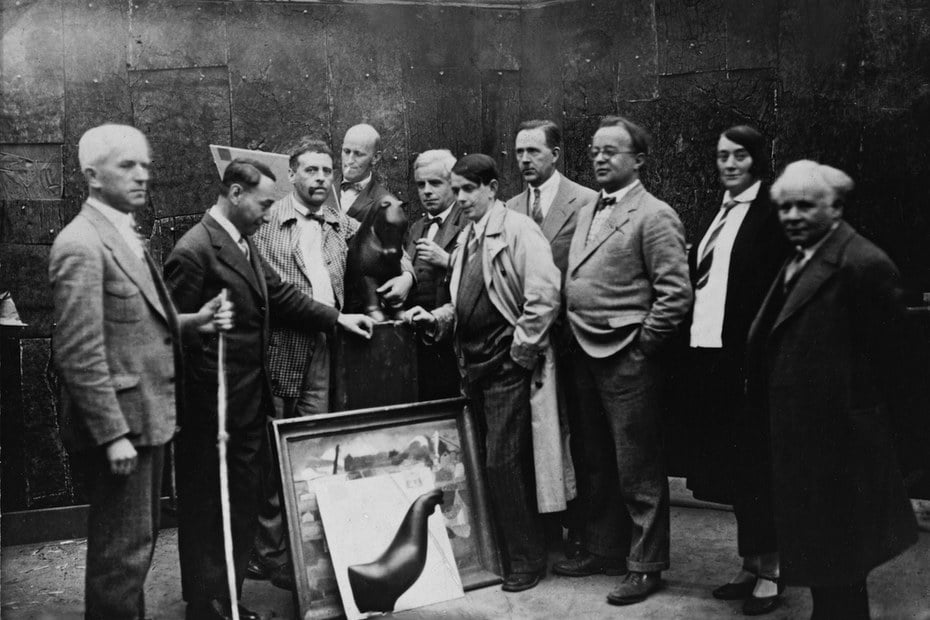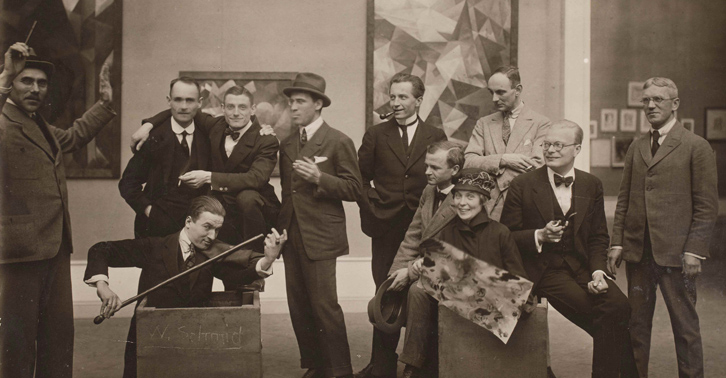Art World
100 Years Ago Today, Germany’s November Group Art Movement Was Founded. Here’s Why That Matters Now
“We stand on the fertile soil of the revolution. Our motto is: Liberty, Equality, Fraternity!” the group declared in their 1918 manifesto.

“We stand on the fertile soil of the revolution. Our motto is: Liberty, Equality, Fraternity!” the group declared in their 1918 manifesto.

Taylor Dafoe

![]()
The fall of 1918 was a tumultuous time in Germany. The country was quickly losing the First World War, and the German citizens were restless, angry with the conditions imposed up on them by the government and the wealthy elite. Then, in November, a new democratic government displaced the monarchy, and Germany signed an armistice with the Allies, effectively ending the war.
The events set in motion a tremendous wave of social and political changes in the country and the rest of the world. The climactic moment also served as a launching pad for one of the most fundamental—if still under-recognized—art collectives in the 20th century: the November Group, a cadre of revolutionary German artists who came together in Berlin in the immediate aftermath of the November Revolution. The group was founded in December—on December 3, to be precise, or 100 years ago today.

Max Pechstein in his house, 1915. Courtesy of Wikimedia Commons.
“We stand on the fertile soil of the revolution. Our motto is: Liberty, Equality, Fraternity!”
These words, in homage to the French Revolution, opened the November Group’s manifesto, written days after the group’s founding amid a torrent of discussion and activity. Their name was a nod to the November Revolution, the uprising that dramatically ended the monarchy in Germany.
Led by the painters Max Pechstein and César Klein, the group united in their socialist impulses toward radicalism, a drive to remake the established order, and the ambition to end to “bourgeois development” of art toward empowering the people. A cohort of Expressionist artists, architects, writers, and other creatives, the group’s members had no qualms about medium; anyone who shared their ideologies could join. However, the work of many of the artists was informed by art movements that had formed prior to the war—namely Cubism, Expressionism, and Dadaism.

Alvar Cawén, Members of the November Group (1921). Courtesy of Wikimedia Commons.
Alongside the founders were original members Georg Tappert, Moriz Melzer, and Heinrich Richter. At the first-ever meeting of the group—again, on December 3rd—they were joined by nearly a dozen others, such as Karl Jakob Hirsch, Bruno Krauskopf, Rudolf Belling, and Erich Mendelsohn. A number of notable names were associated with the group throughout its run, including Hannah Höch, El Lissitzky, and Ludwig Mies van der Rohe. (That latter architect in fact took over as the chair of the collective in 1924.)
The group organized exhibitions, film screenings, and a number of other events— first in Germany, and then in surrounding countries—and published a number of books and magazines. Yet they were as much activists as they were artists, lobbying for political reform as well as a number of issues related to artists, including increased workspace availability, funding for colleges and museums, and contracts with buyers and exhibitors.

Members of the November Group in Berlin, 1920. Clockwise from left: César Klein, unknown, Rudolf Belling, Heinrich Richter-Berlin NN, Heinz Fuchs, Moriz Melzer, Herbert Garbe, Emy Roeder, unknown, Wilhelm Schmid. © Stiftung Stadtmuseum Berlin, Reproduction: Michael Setzpfandt, Berlin © VG Bild-Kunst, Bonn 2018. Courtesy of the Berlinische Galerie.
Between 1918 and the early 1930s, the group mounted at least 40 exhibitions, showed the work of over 450 artists, and grew to a membership of over 200. However, by 1932, the group had all but dissolved in the face of Nazism. It held its last official exhibition that year, showing the work of only four members.
Today, the legacy of the November Group and many of its artists is limited to art historical textbooks. But the group laid the foundation for politically minded collectives throughout Modern era and beyond.